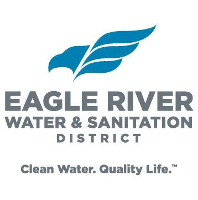Widgetized Section
Go to Admin » Appearance » Widgets » and move Gabfire Widget: Social into that MastheadOverlay zone
ERWSD warns customers about looming water shortages due to climate change
Linn Brooks, the general manager for Eagle River Water & Sanitation District, on Wednesday issued the following letter to customers regarding the impacts to home landscaping irrigation due to aridification driven by climate change:

The effect of climate change on local water supplies is becoming palpable. Hotter temperatures are drying the soils in our watershed, reducing the ability of our snowpack to feed our streams and provide us with sufficient water during dry periods. Lakes Powell and Mead, critical large water supply reservoirs on the Colorado River, are at historic low volumes, which could soon impact the electric power supply and costs across the southwestern U.S. The last 22 years were once believed to be a periodic drought but are now recognized to be the result of regional aridification driven by climate change, or a trend toward permanently drier conditions. The amount of water nature provides us is diminishing. We as a community must reduce our total water use, and Eagle River Water & Sanitation District needs your help to succeed.
Ninety percent of the impact of our customers’ water use on stream flows comes from outdoor irrigation. Unlike indoor water use that is treated and returned to the river where it supports the aquatic environment and can be diverted and used again and again downstream, most water used on landscaping does not return to the river and cannot be reused, reducing local stream flows and the total supply available to our community.
In past years, we have asked you to temporarily reduce your water use to keep water in our local streams during very dry periods, and we appreciate your strong support of these efforts. Now, we are asking you to reduce your outdoor water use permanently through turf removal and conversion to drip irrigation and native vegetation, and we look forward to partnering with you through our rebate program.
To manage the risk of a reduced water supply, we are developing a program that will assign a water budget to each account, based on reasonable indoor and outdoor use, designed to meet customer indoor needs and provide for water-efficient landscaping. The outdoor water budget for each property will not be enough to support full turfgrass coverage but will be enough to adequately maintain a mix of smaller, discrete turf areas along with drip-irrigated areas and native and drought-tolerant species.
We are taking this year to notify our customers of this change in our water supply management approach, while we develop a new billing rate structure and water budgets for customers. Under this new program, the cost of your indoor use and outdoor use within your budget will be paid for at the lower rates in billing tiers 1 and 2, respectively. The cost of water use beyond your indoor/outdoor budget will be increasingly expensive.
The cost of the highest use tiers will increase again in 2023. If you use water in tiers 3, 4 or 5 (considered wasteful and unsustainable), you can avoid high water bills by reducing your outdoor water use this year and planning for a more water-efficient landscape on your property. Reducing turf areas will have the greatest impact on reducing your outdoor water use. Information about turf removal and other rebates is available via your WaterSmart account. To ensure your water-efficient landscape also mitigates the risk to your home from wildfire, refer to fire-resistant landscaping recommendations from Vail Fire and Colorado State University.
We appreciate your support as we prepare to meet the future water needs of our community and mitigate the risks posed by a drying climate.


